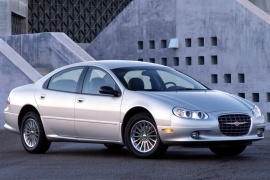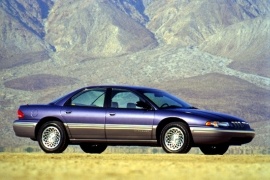CHRYSLER Concorde Models/Series Timeline, Specifications & Photos
First production year: 1993
Engines: Gasoline
Facing many critics for the first generation of the Concorde, Chrysler introduced the second generation in 1998, dismissing its predecessor after only five years since it was launched.
Its predecessor lacked in the lights department, rear window defroster, and a few other areas that made it a slow-seller. With the second generation, the Concorde finally hit the spot. Even if it was longer than its predecessor, it was lighter due to the extensive use of aluminum for the rear suspension and hood. It shared only the door panels with its smaller brother built on the same platform, the Chrysler 300.
At the front, the 1998 Concorde distinguished itself due to the unusual-looking kidney headlights. The quad beam lights were far better than on the 1993 Concorde. Its cab-forward design with a very raked windshield created a dynamic image amplified by the ascending beltline. At the back, a set of elliptic, corner-mounted taillights matched the bio-design era, which was about to end, but it reached the car's target customers.
Inside, the Concorde offered plenty of room for five occupants with more than adequate legroom for the back-seat passengers, thanks to a small center tunnel. At the front, the carmaker installed a rounded-shaped dashboard with five vents on it. The instrument panel was the home of four dials with silver rings around them. On the center stack, the carmaker installed the audio and climate controls into a wood trim. Since the carmaker made the Concorde a mid-size sedan for long journeys, it created a 530 liters (18.7 cu-ft) trunk space.
Under the hood, the 1998 model featured two new engines: an all-aluminum 2.7-liter V-6 and a 3.2-liter V-6. Later on, Chrysler added a re-worked 3.5-liter V-6 from Concorde's bigger brother, the LHS.
Part of the LH series from Chrysler, the Concorde shared its platform with the Chrysler LHX and New Yorker, albeit it was more closely connected with the Eagle Vision from the styling point of view.
Strangely, this Chrysler had a connection with a Lamborghini concept car, the Portofino, which was unveiled at the 1987 Frankfurt Motor Show at a time when the American automaker owned the Italian brand. But that four-door sports car never makes it to production lines. Instead, Chrysler used the idea and the shapes drawn by Kevin Verduyn to create the Concorde.
With its sharp nose sporting a waterfall grille with six vertical slats, the Concorde distinguished itself on the market as a sporty-looking sedan. Its raked, wide windshield started the greenhouse, while the rear windscreen was sloped towards the short, raised deck. At the back, the taillights looked like they were extended on the entire rear panel, although these were only on the car's corner. The area between them was a light bar. The Concorde shared most of its body panels with the Eagle Vision, with both being built on the same assembly line. The LH lineup provided the longest wheelbase in its segment.
The interior boasted a luxurious, leather-clad cabin with bucket seats. In 1994, Chrysler added a split bench on the options list with a column shifter. Its dashboard was adorned with wood veneers extended from the door cards. In the rear, there was room enough for three passengers thanks to the car's long wheelbase. Strangely, the American automaker offered standard airbags for the driver and passenger, but the ABS and traction control were on the options list.
Under the hood, Chrysler installed a 3.3-liter push-rod V6 engine carried over from the carmaker's minivan family, although a 3.5-liter 24-valve V6 was available on the upper trim levels.

